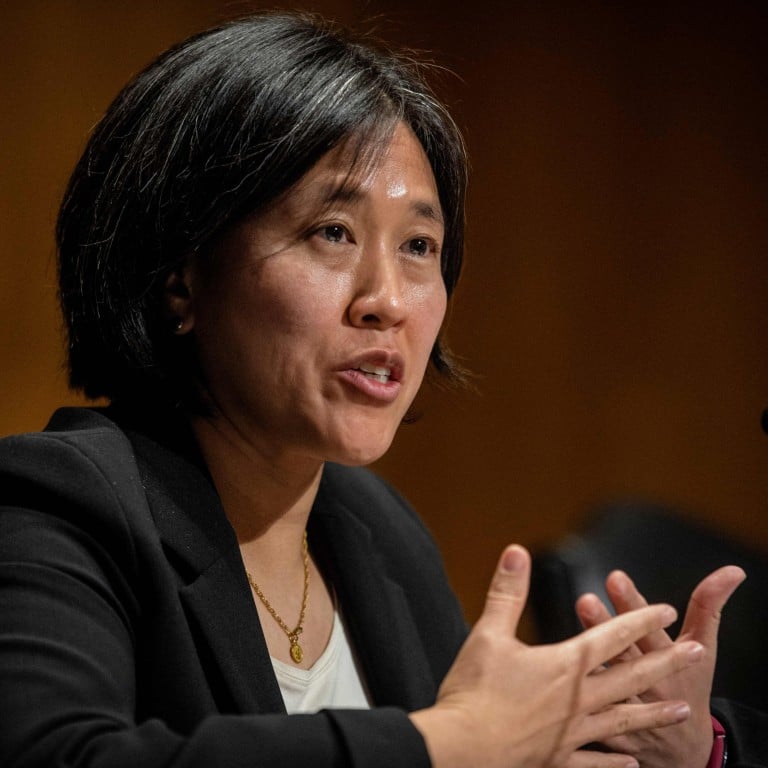
US to keep China’s trade-deal performance under the microscope
- US Trade Representative Katherine Tai briefs a Senate subcommittee, vowing a top-to-bottom review of the trade policy with China
- Tai adds that she will meet with her Chinese counterpart ‘at the right time’ to discuss the phase one trade agreement, without elaborating
Examining how well China has performed against the terms laid out in its phase one trade deal signed with the Trump administration is a “priority” for the new administration, according to US Trade Representative Katherine Tai.
“We are in the process of examining their performance and are scrutinising all of the aspects of what they have done,” Tai said.
She also said that she would conduct a top-to-bottom review of the trade policy toward China. Although the review within the Office of the United States Trade Representative has not begun yet, the USTR said it could lead to a product-exclusion process for goods from China hit by Section 301 tariffs.
“The tariffs, this agreement [and] the exclusion process will be very critical parts of this top-to-bottom review, and I am looking forward to kicking it off,” Tai said.
By the end of March this year, China’s total imports of covered products from the United States stood at US$36.7 billion, compared with the year-to-date target of US$49.0 billion, according to a report by Peterson Institute for International Economics (PIIE) released on Tuesday.
Also through March, China’s purchases of products included in the deal reached only 61 per cent of targets, according to US Census Bureau statistics, or 75 per cent using Chinese customs data, according to the PIIE report.
China’s trade with US failed to meet phase-one deal targets in 2020
China fared better with imports of covered agricultural products but still fell short of commitments, buying 72 per cent or 85 per cent of the year-to-date targets, based on US or Chinese statistics, respectively.
Imports of energy products were particularly low, reaching only 34 per cent or 67 per cent of the year-to-date target, using US or Chinese figures.
In her testimony, Tai also said that the steel and aluminium industries are the “leading contenders” in the competition with China. She added that the tariffs on steel imports imposed by the Trump administration have had “a positive impact” on US production but have “carried costs” for the US by generating friction with America’s trading partners, and that the tariffs failed to address global steel overcapacity “largely driven by China”.
In 2018, the Trump administration imposed a 25 per cent tariff on steel and a 10 per cent tariff on aluminium from most exporters, including the European Union. In retaliation, the EU also imposed 25 per cent tariffs on some US goods.
If we don’t keep our eye on the ball, we will continue to experience these types of fights over the last scraps of an industry that we have lost to a competitor, and in particular to the Chinese
When asked by lawmakers about tariffs on imported solar panels, Tai said the story of the solar panel industry in the United States really gets to the core of the fundamental issue that “we need to confront in our competition with China”.
The US relies heavily on Chinese solar panel manufacturers, many of which are located in Southeast Asian countries such as Vietnam and Malaysia. Meanwhile, China accounts for more than 80 per cent of the world’s supply of polysilicon, a key component in solar panels.
“If we don’t keep our eye on the ball, we will continue to experience these types of fights over the last scraps of an industry that we have lost to a competitor, and in particular to the Chinese,” Tai said.

